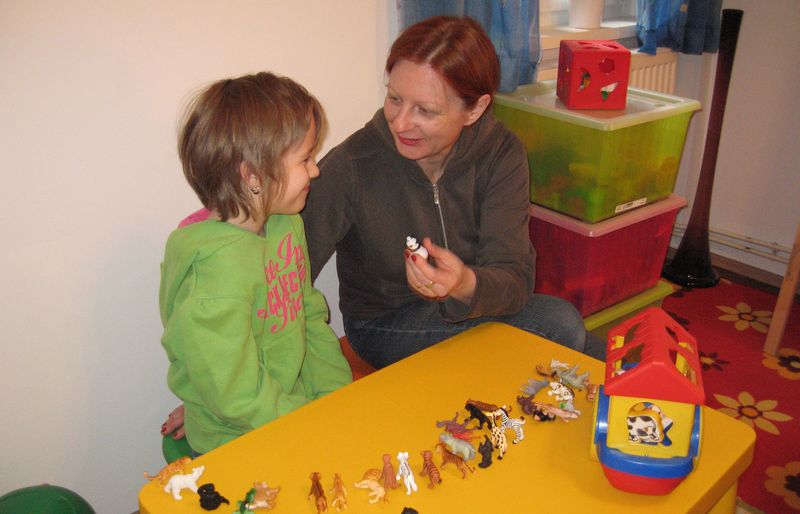
CHILD'S EARLY AGE
. . .
A CHILD'S EARLY AGE INCLUDES THE PERIOD OF TIME FROM THE BIRTH OF THE CHILD UNTIL THREE YEARS OF AGE.
THIS IS THE PERIOD OF LIFE IN WHICH WE FOLLOW EVERY MOVEMENT AND FACIAL EXPRESSION AND LISTEN TO THE SOUNDS THAT THE CHILD INDEPENDENTLY PRODUCES.
In the beginning, the sounds are long vibrating vowels which cause pleasure and which the child spontaneously makes. Even crying comes in different forms (depending on the purpose). The child expresses satisfaction of discomfort by making different sounds. The child responds to our voice with a smile, turning to the direction of the sound and looking for us. First guttural voices, which also occur in this age, will, at the age of about seven months to one year, make combinations of sounds ("bababa", "dada", "gaga", "mama", etc.). It is important to listen to the child and to recognize the richness of intonation, pitch of the sounds...
At the age of seven months the child loves hearing sound stimuli and songs and responds to our orders (e.g. "do you want more", "give", "look", etc.). Crying is used less and less as the only channel of communication. The voice takes the main role in attracting our attention.
The child imitates, listens and increasingly approaches the first word with a meaning (about one year of age), and its vocabulary begins to grow on a monthly basis. The child shows and slowly gives names to objects in the pictures, body parts, so that at around two years of age it begins uttering short sentences (e.g. "He's going bye-bye", "What's that?", "No", "Give it"). There is a significant increase in the child's vocabulary.
In between the ages of two and three the child speaks in sentences of three words, calls things by their real name and its speech is generally understandable to the listener. The child is able to follow two orders.